РАСШИФРОВКА VIN-КОДА АВТОМОБИЛЕЙ CHEVROLET
Все автомобили Шевроле, произведенные в Корее, имеют вин номер, который начинается с KL. Машины, собранные в России, в дополнение к корейскому имеют еще и российский VIN. Начинается он с XU и первые машины имели два номера. Корейский можно было найти в свидетельстве о регистрации в разделе «Особые отметки».
Для того, чтобы правильно определить и найти запчасти для Шевроле, до последнего времени обязательно требовался именно корейский VIN. Сейчас наша компания обладает необходимым программным обеспечением и безошибочно подберет детали на ваш Шевроле.
Ниже можно ознакомиться в расшифровкой корейского VIN.
Пример VIN K L 1 T A 6 9 Y 1 4 B * * * * * *
Номер позиции 1 2 3 4 5 6 7 8 9 10 11 12 13 14 15 16 17
Позиция 1-3 — определение производителя.
1. K — Азия.
2. L — Корея
3. Торговая марка:
A : DAEWOO (KLA) (XKC) / (BMG)
1 : CHEVROLET (KL1) (XKA) / (Y9Y)
2 : PONTIAC (KL2) (XKB) / (BMF)
3 : HOLDEN (KL3) (HDN) / (HDN)
4 : BUICK (KL4) (XKE) / (BUK)
5 : SUZUKI (KL5) (XKD) / (BMH)
Позиция 4 — обозначение модели:
M : M100 K : M200
T : T100 S : T200, T250
J : J100/J150 N : J200
V : V100 L : V100, V250
U : U100 C : C-100
Позиция 5 — тип трансмиссии:
F : FWD (Forward Wheel Drive), MT
A : FWD (Forward Wheel Drive), AT
M : RWD (Rear Wheel Drive), MT
R : RWD (Rear Wheel Drive), AT
C : FWD (Forward Wheel Drive), CVT
G : AWD (All Wheel Drive), MT
D : AWD (All Wheel Drive), AT
Позиция 6- 7 — тип кузова:
08 : 2-Door Hatchback
69 : 4-Door Notchback, 4-Windows
19 : 4-Door Notchback, 6-Windows
26 : All Purpose Window-4door (Liftgate)-C100
48 : 4-Door Hatchback, 4-Windows
68 : 4-Door Hatchback, 6-Windows
35 : 4-Door Station Wagon
75 : 4-Door Muti-Purpose Vehicle
Позиция 8 — тип двигателя:
4: 0.8L SOHC MPFI L3
M: 0.8L DOHC MPFI L3
0(ZERO): 1.0L SOHC MPFI L4
T: 1.2L SOHC MPFI L4
D: 1.2L DOHC MPFI
C: 1.3L SOHC MPFI L4
A: 1.4L SOHC MPFI L4
7: 1.4L DOHC MPFI L4
Y: 1.5L SOHC MPFI L4
V: 1.5L DOHC MPFI L4
6: 1.6L DOHC MPFI L4
H: 1.8L SOHC MPFI L4 (F I)
B: 1.8L DOHC MPFI L4 (F I)
8: 1.8L SOHC MPFI L4 (F II)
3: 1.8L DOHC MPFI L4 (F II)
Z: 2.0L DOHC MPFI L4
K: 2.0L DOHC MPFI L6
W: 2.0L SOHC MPFI L4
S: 2.0L SOHC L4 (LPG)
2: 2.2L DOHC MPFI L4
L: 2.5L DOHC MPFI L6
F: 2.4L DOHC MPFI FII L4
G: 3.2L DOHC MPFI HF V6
P: 2.0L DOHC LPI L6(LPG)
R: 2.0DSL 150PS DIESEL
U: 2.0DSL 120PS DIESEL
Расшифровка: DOHC — 16-клапанный мотор, SOHC — 8-клапанный.
Позиция 9 — стандарты:
J : Euro 2005 (Euro-4) [NNJ or NT4]
1 : Euro 2000 (Euro-3) [NN1 or NT3]
E : Euro 1996 (Euro-2) [NN7 or NT2] & Others
L : Leaded [NN4 or NQT]
Позиция 10 — год выпуска:
1 : 2001 2 : 2002 3 : 2003 4 : 2004 5 : 2005
6 : 2006 7 : 2007 8 : 2008 9 : 2009 A : 2010
Позиция 11 — место производства:
B : BUPYUNG K : KUNSAN C : CHANGWON
Следующие 6 цифр порядковый номер машины.
iskra22.ru/stati/14-rassh…oda-avtomobilej-chevrolet
СЕДАН-НОТЧБЕК (SEDAN-NOTCHBACK)
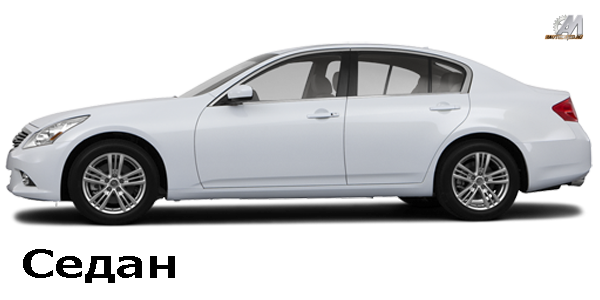
В России – просто седан. Трехобъемный кузов, имеет два основных ряда сидений, четыре двери и горизонтальную крышку багажника.
Примерно с 40-х годов прошлого века утвердился как классический. Большинство легковых автомобилей в мире имеют данный кузов. Седан, как правило, присутствует в модельных рядах всех моделей автомобилей, которые производятся в разных кузовах.
- РФ: Седан
- USA: Sedan, Fourdoоr
- CND: Sedan, Fourdoоr
- AUS: Werdine
- SUI: Werdine
- PL: Kareta
- CZ: Kareta
- GB: Saloon
- FR: Berline
- GER: Limousine
- ITA: Berlina
- KOR:Sedan
СЕДАН-ХАРДТОП (SEDAN-HARDTOP)

«Hardtop» в переводе с английского – «жесткий верх». Трехобъемный кузов, Имеет два основных ряда сидений, четыре двери и горизонтальную крышку багажника. Отличие от нотчбэка в отсутствии боковой стойки между передней и задней дверями.
Были распространены в США в середине прошлого века. В современном автомобильном мире седан-хардтоп — довольно редкий представитель. В основном — из-за низкой жесткости крыши.
- РФ: Седан
- EUR: Sedan-Hardtop
- USA: Sport-Sedan
ХЭТЧБЕК (HATCHBACK)

Хэтчбек – от английского «hatch» – «люк» и «back» – «задний». Двухобъемный кузов, имеет два основных ряда сидений, четыре двери и покатую заднюю дверь. Хотя функционально он предназначен для перевозки как пассажиров, так и груза (при сложенных задних сиденьях), используется в основном для перевозки пассажиров.
Данный тип кузова появился сравнительно недавно (Renault 16 – первый «официальный» хэтчбек – появился в 1964-м, а уже в 1966 он стал «автомобилем года»), однако находится на втором месте по распространенности после классического седана. Распространен в основном в Европе.
Иногда (например у VOLKSWAGEN GOLF), задняя дверь хэтчбека расположена почти вертикально (как у универсалов), однако по компановке это именно хэтчбеки, т.к. багажное отделение практически отсутствует.
- РФ: Хэтчбек (Комби)
- KOR: Sedan
- UK: Hatchback
- USA: Hatchback
- JPN: Hatchback
- GER: Heckklappenlimousine (Kombi)
- PL: Kombi
- AUS: Hegkleppen
- SUI: Hegkleppen
- NL: Hegkleppen
ЛИФТБЕК (LIFTBACK)
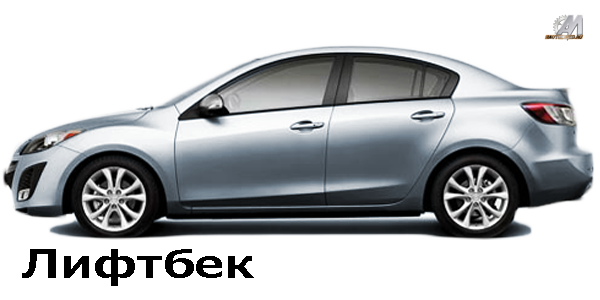
Этот кузов мало отличается от вышеупомянутого хэтчбека. Отличие заключается в наличии «ступеньки» на задней двери, что делает лифтбек в профиль похожим на седан-нотчбек. Данный тип кузова нигде не классифицирован, поэтому может называться и седаном (Chery Amulet), и хэтчбеком (Nissan Primera P11), и лифтбеком (Toyota Avensis), и комби (ИЖ Комби), и т.д.
Есть мнение, что первоначально применять данный термин стали именно тойотовцы, а потом он стал использоваться и для других авто.
УНИВЕРСАЛ (WAGON)
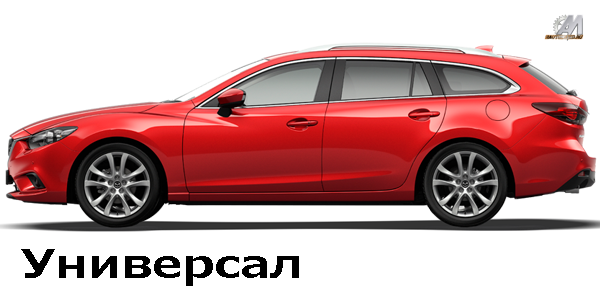
Двухобъемный кузов с 2-5 дверями и вертикальной задней (т.н. нечетной) дверью, открывающейся вверх (люк багажника в данном случае объединён с задним стеклом).
Американцы как правило не считают заднюю дверь (отсюда бывают двух- и четырёхдверные универсалы), а европецы – считают (соответственно кузова имеют три и пять дверей).
Универсал вполне оправдывает свое название. Этот кузов вполне можно считать универсальным. И на деловую встречу съездить не стыдно и картошку с дачи привезти можно.
- USA: Station Wagon
- GB: Estate Car, Shooting Brake
- F: Break, Estate
- GER: Kombilimousine, Kombi
- PL: Kombi
- I: Giardinera, Familiare, Giardinetta
КОМПАКТВЭН (COMPACTVAN) и МИНИВЭН (MINIVAN)
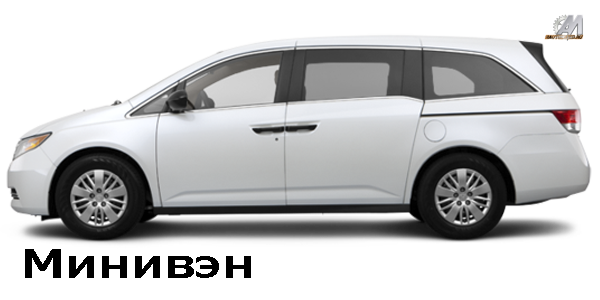
По сути компактвэн и минивэн – это практически одно и тоже. Такие автомобили вместе с фургонами именуются коммерческими. Могут иметь сдвижные задние боковые двери.
Если универсал имеет покатое ветровое стекло, составляющее плавную линию с капотом (например Renault Espase, Pontiac Trans Sport), то такой однообъёмный кузов как правило называют минивэн (mini-van) или даже просто вэн (van). Последний термин не совсем правильный, т.к. вэн – это фургон и имеет некоторые отличия (фургон предназначен для перевозки грузов и обычно двухобъёмный). Такие автомобили несколько больше простых легковушек.
Если универсал имеет «высокую» крышу – как правило над задней частью автомобиля – (например Renault Kangoo, Citroen Berlingo), то такой кузов как правило называют компактвэн (compact-van). Построены они на шасси легковых авто (VW Caddy – шасси VW Golf).
КРОССОВЕР (CROSSOVER)
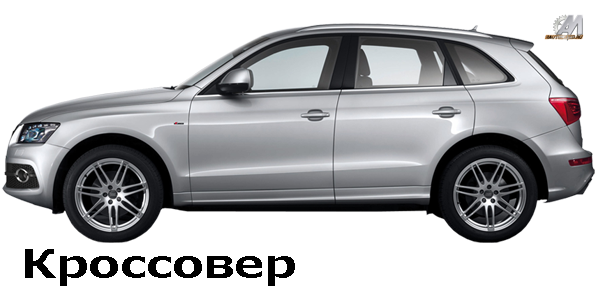
Те же универсалы, но имеющие полный привод (как правило это подключаемый полный привод, может быть и передний), усиленную но независимую подвеску и слегка увеличенный дорожный просвет. Лучший пример – Audi Allroad (практически та же Audi A6 Avant, но имеющая вышеперечисленные отличия) или Volvo V70 CrossCountry (впоследствии Volvo XC70). К кроссоверам также можно отнести т.н. городские внедорожники (Toyota RAV4, Nissan Qashqai и другие).
Такой автомобиль больше подходит для лазанья по городским бордюрам. Для серьезного бездорожья он не годится.
В последнее время (в связи с повальным увлечением автопроизводителей кроссоверами) практически все кроссоверы изготавливаются в кузове хэтчбек. Однако по функционалу они ближе к универсалам, чем к хэтчбекам, да и исторически кроссоверы «выросли» именно из универсалов. Типичный представитель — Nissan Qashqai.
ВНЕДОРОЖНИК (OFF-ROAD VEHICLE)

Как правило внедорожные автомобили имеют кузов «универсал» (хотя встречаются и редкие исключения: так Suzuki Vitara выпускалась в кузове, который можно было бы отнести разве что к купе…). В отличие от обычных легковых универсалов они построены на раме, а не с несущим кузовом, имеют постоянный полный привод (может быть и задний) и зависимую подвеску с неразрезными мостами. Нечетная дверь может открываться по-разному:
- вверх / петли сверху: как у обычного универсала;
- в сторону / петли с одной стороны: как обычная дверь;
- распахиваться в разные стороны / 2 двери, петли с двух сторон;
- распахиваться вверх-вниз / 2 двери, петли сверху и снизу: напоминает пикап с жёстким верхом.
Также у некоторых моделей может отдельно открываться окно нечетной двери.
РОДСТЕР (ROADSTER)

Пассажирский двухместный кузов со складывающимся мягким тентом.
- ITA: Spider
КАБРИОЛЕТ (CABRIOLET)
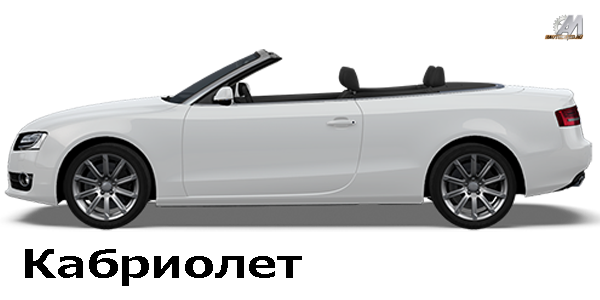
Пассажирский кузов с двумя рядами сидений, мягким складывающимся тентом, опускающимися боковыми окнами и без боковой стойки между передней и задней дверями. Фактически это седан-хардтоп либо (чаще всего) купе со складным мягким верхом. Двери не имеют рамок вокруг окон и стёкла дверей опускаются полностью.
БРОГАМ (BROUGHAM)
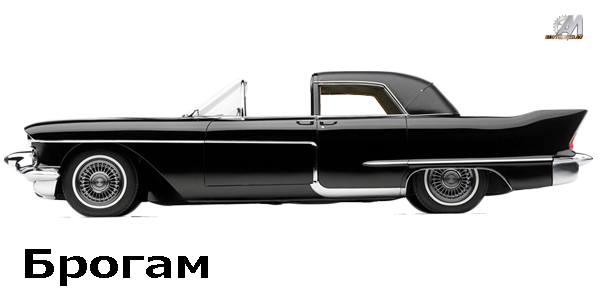
Пассажирский кузов с открывающейся частью крыши над передним рядом сидений (или без нее). До появления автомобиля так именовались экипажи с аналогичной конструкцией.
- F: Coupe de Ville
ТАРГА (TARGA)

Пассажирский кузов со съемной средней частью крыши. В конструкции крыши возможны варианты. Например, так называемая «Т-образная» крыша – с центральной, продольной балкой, разделяющей съемную часть на две половины.
А вот для чего для BUGATTI VEYRON TARGA выбрали именно кузов тарга — загадка. Вероятно не нашли места для складной крыши, которая на таком автомобиле смотрелась бы намного выигрышнее. Но зато это один из редких представителей автомобильного мира в таком кузове.
КУПЕ (COUPE)

От французского «couper» – «отрезать». Двухобъемный или трехобъемный пассажирский кузов с двумя боковыми дверями и со стесненными посадочными размерами задних сидений. Поскольку понятие «стесненный» неоднозначно, проще будет сказать, что купе – это автомобили сделанные по формуле 2+2. То есть 2 полноценных места спереди и два места, которые годятся разве что для детей, сзади (тот, кто хоть раз ездил на заднем седенье в автомобиле-купе, всё поймёт сразу). Крышка багажника у купе дверью не является, то есть через багажник проникнуть в салон нельзя. Такие модели кузова зачастую используются в спортивных автомобилях.
- ITA: Gran Turismo
ЛИМУЗИН (LIMOUSINE)
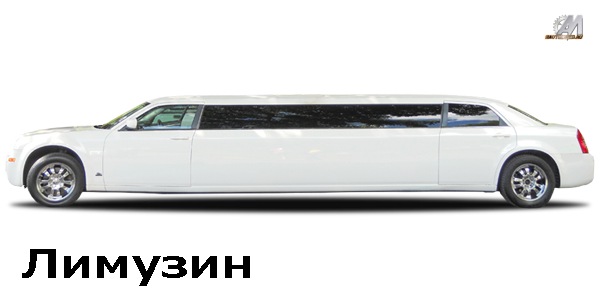
От названия исторической провинции Лимузен во Франции. На дорогих автомобилях начала ХХ века водитель располагался вне салона (такой кузов назывался лимузином).
Сейчас лимузин – трехобъемный пассажирский кузов с четырьмя или шестью боковыми дверями, двумя или тремя рядами сидений, имеющий перегородку за первым рядом сидений, с открывающимся окном. При трехрядной компоновке салона второй ряд сидений либо складной, либо расположен спиной к направлению движения.
Немцы называют лимузинами седаны, а лимузины – пульманами.
- GER: Pullman
- SWE: Pullman
ПИКАП (PICK-UP)
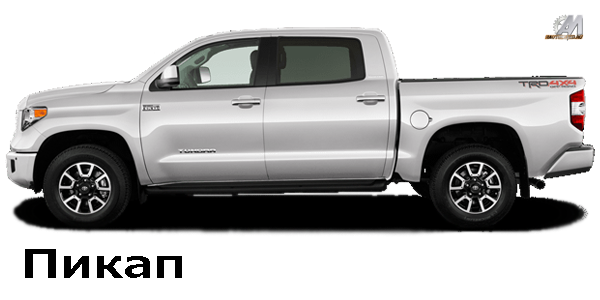
От английского – «pick up» – «поднимать». Грузопассажирский кузов с закрытой кабиной для водителя и пассажиров и открытой платформой для перевозки грузов. Кабина может быть оборудована двумя, тремя или четырьмя боковыми дверями и иметь один или два ряда сидений по схеме 2+1, 2+2 или 2+3. У грузовой платформы откидной задний борт, мягкий или жесткий верх. в Европе практически не продаются . Основные потребители рынка пикапов (как и универсалов) американцы. Называют они их грузовиками (truck), хотя судя по их размерам (например Chevrolet Avalanche) они таковыми и являются.
- USA: Truck, SUT (Sport Utility Truck)
- CND: Truck, SUT (Sport Utility Truck)
From Wikipedia, the free encyclopedia
The configuration of a car body is typically determined by the layout of the engine, passenger and luggage compartments, which can be shared or separately articulated. A key design feature is the car’s roof-supporting pillars, designated from front to rear of the car as A-pillar, B-pillar, C-pillar and D-pillar.
Common car body configurations are one-box (e.g., a van/minivan/MPV), two-box (e.g., a hatchback/SUV) and three-box (e.g., a sedan/saloon) designs.
A one-box design, also called a monospace, mono-box or monovolume configuration[1]—approximates in shape a single volume comprising engine, cabin and cargo areas, in part by locating the base of a vehicle’s A-pillars further forward.[1][2]
One-box designs include light commercial vehicles, minivans, MPVs and mini MPVs. Passenger cars with a one-box design include the 1984 Renault Espace, 1992 Renault Twingo I, 2008 Tata Nano, 2005 Toyota Aygo/Citroën C1/Peugeot 107 and 1997 Mercedes-Benz A-Class.
Two-box designs articulate a volume for engine and a volume that combines passenger and cargo volumes, e.g., station wagon/estate or (three or five-door) hatchbacks like the Saab 900, and minivans like the Chrysler Pacifica, 2001 Volkswagen Polo Mk4 and 1999 Skoda Fabia Mk1.[1][2]
Three-box design is a broad automotive styling term describing a coupé, sedan/saloon, notchback or hatchback where—when viewed in profile—principal volumes are articulated into three separate compartments or boxes: engine, passenger and cargo, However, A three-box sedan and a three-box coupe are generally both smaller than a conventional cab truck and a standard bus.[1]
Three-box designs are highly variable. Hemmings Motor News said:
These three boxes, compartmentalized as they are, are used to denote distinct areas of an automobile—specifically a sedan. The engine under the hood and surrounding compartment is the first box. The passenger seating area is another, or second box. The last or third box is the cargo or trunk area. There is no rule as to which box needs to be where.[3]
Where the Renault Dauphine is a three-box that carries its engine in the rear and its cargo up front, the styling of the Škoda Octavia integrates a hatchback with the articulation of a three-box. This style was later used by its larger Škoda Superb, which marketed as the TwinDoor, within the liftgate operable as a trunk lid or as a full hatchback. As with the third generation European Ford Escort (also a hatchback), the third box may be vestigial. And three-box styling does not need to be boxy: Car Design News calls the fluid and rounded Fiat Linea a three-box design[4]—and most examples of the markedly bulbous styling of the ponton genre are three-box designs.
In 2012, Hemmings Motor News wrote «the three-box sedan design is seen as traditional or—worse—conventional.»[3]
By 2016 In the United States, the three-box sedan began to wane in popularity.[5][6] In 2018, the Wall Street Journal wrote: «from gangster getaway cars and the Batmobile to the humble family sedan, the basic three-box configuration of a passenger car—low engine compartment, higher cabin, low trunk in the rear—has endured for decades as the standard shape of the automobile. Until now.»[5]
Sales and popularity of four-door notchback sedans/saloons began declining in Europe since mid-1990s, especially affordable ones. This is resulted in moving production of Volkswagen Jetta in Mexico, as well as the Peugeot abandoning that segment since 2001 when the production of Peugeot 306 ended. Other, predominantly European manufacturers followed suit, with the most recent generation of Opel Astra may no longer to be offered as the four-door notchback. Since 2018, Ford reduced sales of four-door Focus as well as Mondeo to Eastern Balkans markets. Again, Volkswagen stopped sales of Jetta in Europe around the same time due to too long dimensions, exceeding those with International Passat B8.
Car roof classification
[edit]
A related classification is based on the style of roof in the car design. The DrivAer aerodynamics model of the Technical University of Munich[7] classifies roof styles as (F) Fastback, (E) Estate Back, (N) Notchback/Sedan.[8]
Motorsport applications
[edit]
The bodies of stock cars can be modified for motorsport purposes while retaining their main characteristics. The DrivAer high-performance (hp) configuration,[9] a parametric academic model, provides an open-source wind tunnel dataset and serves as a benchmark, particularly valuable when combined with the original DrivAer Fastback (F) variation variant for aerodynamic analysis. Aero kits applied are in line with those found in motorsport categories like European DTM and American NASCAR series.
- Ponton styling
- Coke bottle styling
- Glossary of automotive design
- ^ a b c d «Starting Out: Car Design Glossary — Part 2 pg 3». www.cardesignnews.com. Archived from the original on 4 March 2016. Retrieved 31 May 2018.
- ^ a b Mike Mueller (2003). American Cars of the ’50s. Crestline Imprints. ISBN 0-7603-1712-7.
- ^ a b «Compartmentalized Cars, Boxes and boxes on boxes: the basis of the three-box design». Hemmings Motor News.
- ^ «Fiat Linea». Car Design News. Archived from the original on 2011-07-27. Retrieved 2010-08-06.
- ^ a b «America Has Fallen Out of Love With the Sedan». Wall Street Journal.
- ^ «On the Death of the Sedan». Car and Driver.
- ^ «DrivAer Model». www.epc.ed.tum.de. Retrieved 26 December 2021.
- ^ «DrivAer Model: Geometry». www.epc.ed.tum.de. Retrieved 26 December 2021.
- ^ «SAE MOBILUS». saemobilus.sae.org. Retrieved 2023-12-21.
The three-door hatchback Verve Concept – also displayed by Ford at Guangzhou – debuted at the recent Frankfurt Motor Show.
The third and last Verve Concept will be unveiled by Ford in January at the North American International Auto Show in Detroit.
From the official Press Release:
The fact that Ford staged the global reveal of the four-door Verve Concept at Guangzhou signals the importance of Asia in Ford’s global plans.
Sporty and coupe-like, the Verve Concept notchback provides a very clear vision about Ford’s future small car design direction.
“With this new four-door Verve Concept, the picture of Ford’s big plans for the small-car segment is becoming clearer,” said Phil Spender, Chief Operation Officer of Ford Motor (China) Ltd.
“Our future small car is being developed as a global car. It will be designed in Europe, engineered in Germany and manufactured globally. These two Verve Concepts demonstrate how confident Ford is in its direction and its appeal to consumers here in China.”
Ford’s European design team created the Verve Concepts, which successfully apply Ford’s kinetic design philosophy for the first time to a small car. The two Verve Concepts clearly display a European flair and premium touches not expected in this segment.
Once all have been revealed, the trilogy of Verve concept cars will provide an advanced indication of Ford’s design vision well in advance of the production models. This approach is similar to the way in which the iosis Concept preceded the new Ford Mondeo.
Design
Side by side in Guangzhou, the two Verve Concepts bring the latest wave of Ford’s kinetic design to the heart of Asia.
Their colours are inspired by the world of fashion; the regal frosted grape of the new Verve Concept four-door notchback complements the bold magenta of the Frankfurt three-door hatchback like a well-coordinated ensemble.
“First it was the hatchback and now a very exciting and dynamic notchback,” said the father of kinetic design, Martin Smith, Ford’s Executive Director of European Design.
“Looking at these concepts together, you can just imagine how exciting the successor to the Ford Fiesta will be when it hits the market.”
Ford designers will be carefully studying reactions to the new notchback by Chinese consumers.
Ford European design chief Smith said, “These Verve Concepts are a dynamic first public expression directionally of some of the thinking that will be contributing to the design DNA of our next-generation products. At this stage, we have had the freedom to be radically innovative, but I’m confident about the realistic possibilities for kinetic design to embrace this segment of vehicles.”
The latest Verve Concept builds on the very distinctive look of its hatchback sibling.
These two concept vehicles share strong front-end graphics that, with the advent of the new Mondeo, are now becoming recognised as the bold, new face of Ford.
The notchback body form of the new concept family is linked with the hatchback through the use of form language composed of dynamic lines and full surfaces – the signature of kinetic design.
The new notchback execution brings new hints about Ford’s kinetic design approach to sedan variants of its future small car family.
Smith’s exterior design team – led by European Exterior Chief Designer Stefan Lamm – took full advantage of the notchback shape to stretch the kinetic design elements and create a very sleek and dynamically poised personality.
The notchback displays a sleek, pillarless side window profile providing a bold graphic statement, along with strongly defined wheel arches that communicate tension and muscularity.
Its dramatic C-pillar shape contributes to this feeling of dynamism, while the rear body and decklid shapes coherently build on the toned and fit kinetic design look with full surfaces and bold lines.
As any top fashion model on the catwalk, Guangzhou’s new Verve Concept is dressed well.
From its seductive colour to the smallest detail, Verve Concept evokes an air of premium quality not usually found in the small-car segment.
Despite the functional differences with the hatchback shape, the notchback’s rear design clearly displays the same kinetic design influences.
The rear glass of the Verve notchback is shaped to correspond with the forms of the high-mounted, two-piece tail lamps. This unique and premium execution, first seen on the new Mondeo, is now translated into a smaller car.
A dark chrome diffuser at the lower bumper is consistent with the design of the hatchback but shaped specifically for the notchback design.
Like its sibling, the notchback Verve’s face is bold and sporty, yet friendly and engaging.
The front end is dominated by a large, inverted trapezoidal lower grille and a large Ford oval badge centred in the compact upper grille opening.
The lower grille features a strong eggcrate graphic; its vertical and horizontal blades bonded by an array of intriguing ‘bullet’ shapes.
The lower grille and badge treatment are the design team’s signature elements to communicate the Ford design DNA in future products.
The hood features highly sculpted dynamic forms. This form treatment combines with the more pronounced, rearward-stretching head lamp units – inspired by Mondeo – to give the face of the Verve a friendly, open and inviting personality. The prominent headlamps feature two projector beams and a light-emitting diode (LED) array.
The two Verve Concepts share a distinctive 18-inch, 12-spoke, two-piece alloy wheel design that lends more drama to the car. The wheels have a precise, jewel-like feel to their design. Both Verve Concepts’ are wearing low-profile tyres featuring a sidewall stripe that complements the exterior body colour.
“With a small car, for example a B-segment car compared to a larger car, we believe we can play up – or amplify – key elements of the kinetic design form language,” Lamm said. “It’s not just a matter of copy-and-paste from one vehicle segment to another but rather how to interpret the philosophy for each individual car. You can clearly see this when you compare the larger iosis Concept and this new project.”
(Source: Ford)
Vehicle Identification Number
The vehicle identification number «VIN» is composed of 17 characters. The first 3 characters define the manufacturer. As of Model Year ’98, characters 4 to 9 describe the vehicle, using the so-called GM codes. Characters 10 to 17 describe the Model Year, manufacturing plant and the serial number.
Notice:
The individual characters in the vehicle identification number are explained using VIN W0L0VBM35W1000027 as an example. For clarity, the characters are shown in a vertical column. The valid items in the VIN are shown in bold face.
Characters 7 to 9 are defined in detail in the following table.
|
Body style |
Equipment |
Body style |
Model code |
|
F07 |
Standard |
2-door Coupe Hatchback |
75 |
|
F08 |
Swing |
2-door Saloon Hatchback |
73 |
|
F19 |
GL |
4-door Saloon Notchback, 6 windows |
56 |
|
F25 |
Standard |
3-door Delivery Van Special |
71 |
|
F35 |
GL |
4-door Estate |
51 |
|
F68 |
GL |
4-door Saloon Hatchback, 6 windows |
58 |
|
F70 |
GL |
2-door Delivery Van |
55 |
|
M35 |
CD |
4-door Estate |
22 |
|
M69 |
CD |
4-door Saloon Notchback, 4 windows |
26 |
|
P35 |
MV6 |
4-door Estate |
23 |
|
P69 |
MV6 |
4-door Saloon Notchback, 4 windows |
27 |
1.2 Vehicle Identification Number (continued)
|
VIN |
Character |
Explanation |
||
|
W |
1 |
Defined code for manufacturer of vehicle: |
||
|
0 |
2 |
W0L = ADAM OPEL AG |
||
|
L |
3 |
|||
|
0 |
4 |
GM code for manufacturer: zero (or specifically defined letter) |
||
|
V |
5 |
GM code for vehicle type: |
||
|
S = Corsa, Combo, Tigra |
||||
|
T = Astra |
||||
|
J = Vectra |
||||
|
V = Omega |
||||
|
B |
6 |
Model designation |
||
|
B = Corsa-B, Combo-B, Vectra-B, Omega- B |
||||
|
A = Tigra-A |
||||
|
F = Astra-F |
||||
|
M |
7 |
GM code for body style: (7th character: equipment, 8th and 9th characters: body) |
||
|
3 |
8 |
F07, F08, F19, F25, F35, F68, F69, F70, M07, M35 , M69, P25, P69, |
||
|
5 |
9 |
M = CD 35 = 4-door Estate |
||
|
W |
10 |
Model Year: W = 98 |
||
|
1 |
11 |
Manufacturing plant: |
||
|
1 = Rüsselsheim |
2 = Bochum |
3 = Azambuja |
||
|
4 = Zaragoza |
5 = Antwerp II |
6 = Opel Eisenach |
||
|
7 = Luton |
8 = Ellesmere Port |
|||
|
B = Bertone |
D = Chin Chuang, Taiwan |
F = Zamalek, Egypt |
||
|
H = Halol, India |
J = Bekasi, Indonesia |
S = Szentgotthard, Hungary |
||
|
P = Warszawa, Poland |
Z = Izmir, Turkey |
|||
|
0 |
12 |
Serial number: |
||
|
0 |
13 |
27th vehicle in Model Year 1998 |
||
|
0 |
14 |
|||
|
0 |
15 |
|||
|
2 |
16 |
|||
|
7 |
17 |
